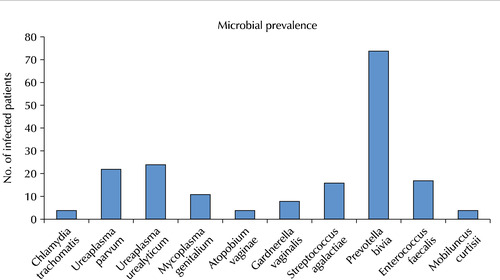-
Impact of Microbial Infection on Sperm Parameters of Seminal Bacteria in Asymptomatic Subfertile Males
-
Sae Byuk Chang, Tae Jin Kim, Tae Heon Kim, Seung-Ryeol Lee, Young Kwon Hong, Dong Soo Park, Sun-Mi Cho, Dong Hyeon Lee, Young Dong Yu
-
Urogenit Tract Infect 2023;18(3):82-92. Published online December 31, 2023
-
DOI: https://doi.org/10.14777/uti.2023.18.3.82
-
-
 Abstract Abstract
 PDF PDF PubReader PubReader ePub ePub
- Purpose: This study examined the effects of asymptomatic bacteriospermia on the semen quality of subfertile males. The types of bacteria and their antibiotic susceptibility were also analyzed.
Materials and Methods: Semen was collected and analyzed from 510 subfertile males. One hundred and seventy-nine males showed bacteriospermia, while 331 males did not. The bacterial species, sperm parameters, hormone levels, underlying disease, and lifestyle patterns were compared between the two study groups.
Results: The bacteriospermic males showed significantly higher rates of leukocytospermia (p=0.001) and deoxyribonucleic acid (DNA) fragmentation than the non-bacteriospermic males. Sperm motility was significantly lower in the bacteriospermic males than in non-bacteriospermic males. The most common seminal bacterial species were Prevotella bivia (P. bivia, 41.3%) and Ureaplasma urealyticum (U. urealyticum, 13.4%). U. parvum showed the highest recurrence rates (31.8%) three months after the initial antibiotic treatment. Regarding the sperm parameters of bacteriospermic males, the sperm concentration, total motility, progressive motility, leukocytospermia, and DNA fragmentation were improved significantly after the initial antibiotics treatment. Multivariate logistic regression analyses revealed P. bivia, U. urealyticum, and U. parvum to be associated with the decreased motility and increased DNA fragmentation of spermatozoa. P. bivia was also associated with a decreased sperm concentration (p=0.002) and vitality (p=0.013).
Conclusions: Bacteriospermia decreased the sperm concentration, motility, normal morphology, and vitality. P. bivia is the most commonly observed bacteria in subfertile males. Appropriate antibiotic therapy of seminal bacteria species had a strong positive impact on improving the semen parameters.
|




